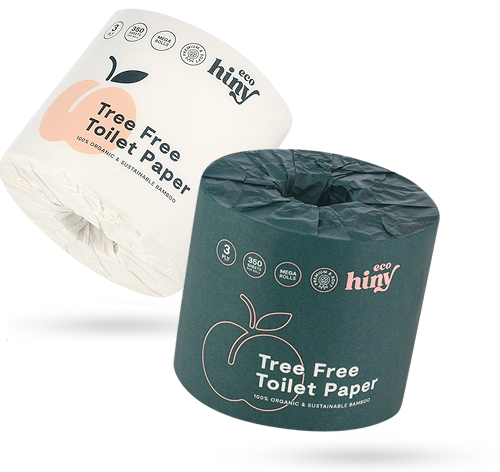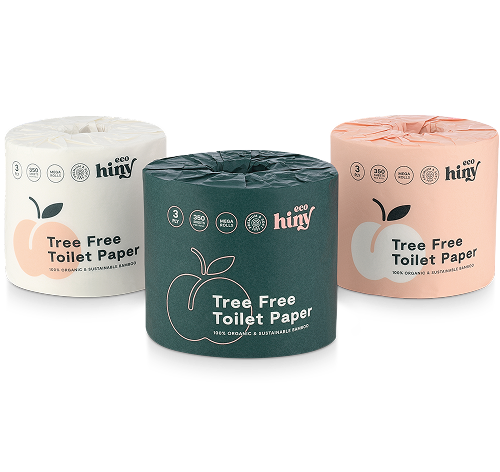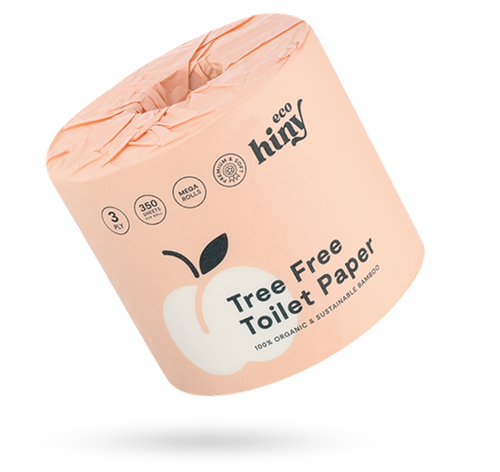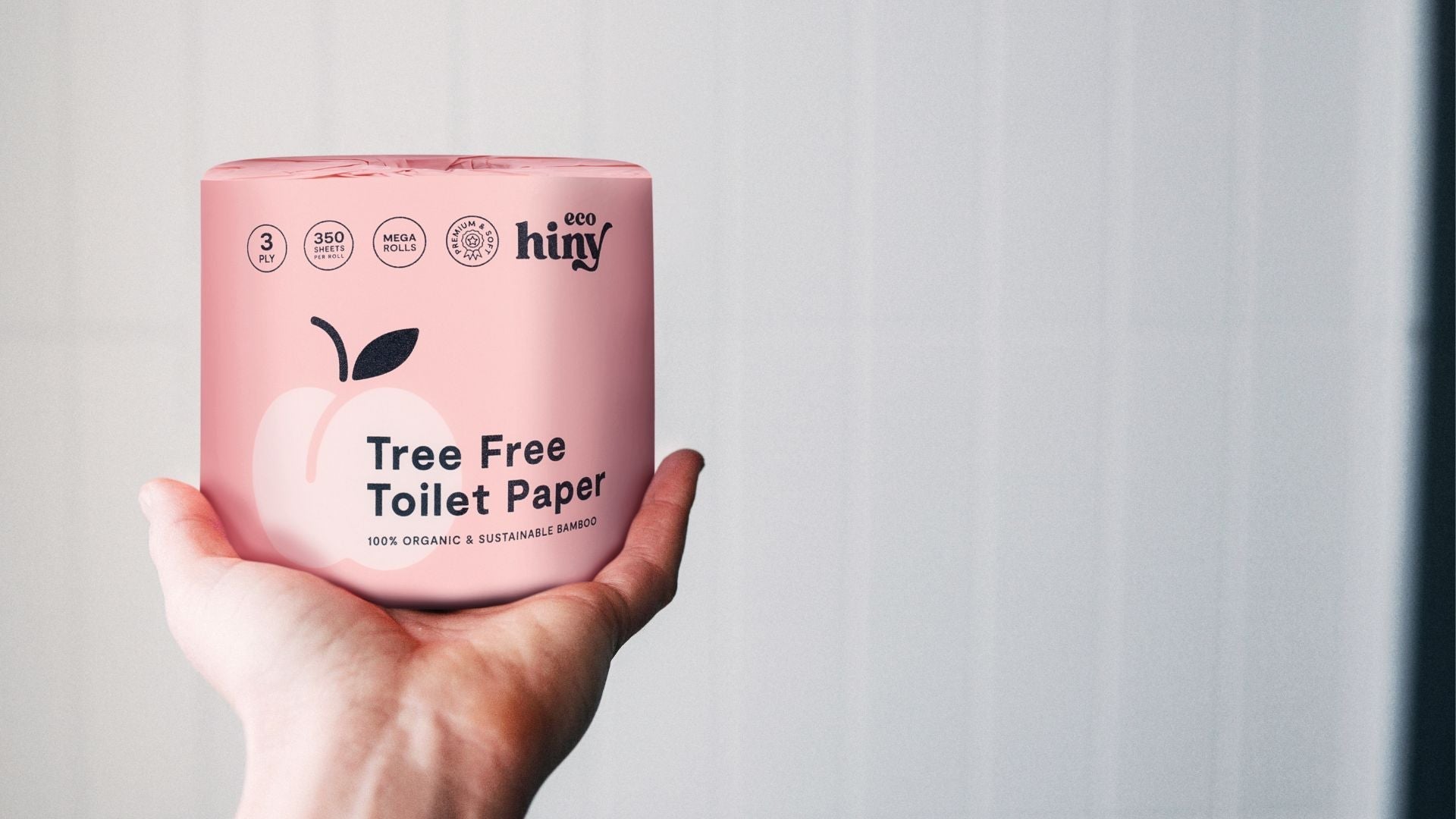Key Points
- Colored toilet paper was once a popular choice for homeowners looking to coordinate their bathrooms with pastel hues, reflecting personal style and the decor trends of the mid-20th century.
- Consumers began to shift away from colored toilet paper due to growing awareness regarding the potential health risks associated with synthetic dyes and their effects on sensitive skin.
- The influence of environmental awareness also played a role in the decline of colored toilet paper.
- Bamboo toilet paper is a natural, eco-friendly option that provides a modern solution without harmful chemicals and also has immense environmental benefits.
Color coordinating with the commode? Matching items to your bath mats? Taking tile into consideration? There was a time when all of these questions weighed heavily into bathroom decor decisions.
For many years, it was all the rage to ensure that the color scheme in household bathrooms coordinated to a tee.
Well, actually, to the T.P.
Once upon a time, toilet paper was not just a necessity but a serious decor trend. Shades like pastel pink, baby blue, and gentle green pervaded toilet paper purchases. However, it was a fairly short run.
Due to health and environmental concerns, its popularity began to decline. Today, consumers are accustomed to white as the traditional standard of toilet paper, with expanded options emerging that promise a healthier and more sustainable future.
A Brief History of Colored Toilet Paper
Colored toilet paper became popular in the United States around the 1950s. This trend was largely influenced by a growing interest in home decor during that era. Homes were becoming showcases for personal style and expression rather than being viewed as just a functional space to live.
Colored toilet paper was marketed not just as a necessity but also as a way to express individuality and style, so it appealed to homeowners who were eager to show off their design prowess. Soft pastel palettes were especially popular during this time, and toilet paper manufacturers began offering paper in these colors to complement bathroom aesthetics. (1)
However, by the 1970s, the popularity of colored toilet paper began to decline, and by the 1980s, colored toilet paper was virtually impossible to find on supermarket shelves.
This was partially due to a shift in design preferences; white tile and fixtures were becoming more popular, but the changes were primarily due to concerns over dyes and chemicals used in the products. (2)
As a result, traditional white toilet paper became the standard choice for most consumers.

Kind to you, Kind to the planet
Our mission is to save one billion trees by making the switch to ecoHiny.
Why Colored Toilet Paper Fell Out of Favor
Health concerns related to dyes used in colored toilet paper were the first major culprit in colored toilet paper's demise.
As awareness around health and safety increased, consumers began to question the risks of exposure to the dyes used in these products. Many synthetic dyes used in toilet paper production contain chemicals that have been linked to skin irritation and allergic reactions. (3)
Since toilet paper is a personal hygiene product that comes into direct contact with sensitive skin (and sensitive areas!), the potential for irritation due to the added dyes caused consumers to shy away from the trend.
The worry of rashes and discomfort led people to reconsider their choice in toilet paper, steering them towards unscented and undyed options that were considered to be safer and more natural.
Additionally, the environment began to take center stage around that time. With the publication of Rachel Carson's Silent Spring, a new environmental movement began in the U.S., setting forth a flurry of legislation aimed at improving water and air quality and shedding light on serious environmental concerns. (4)
This increasing awareness certainly contributed to consumers prioritizing eco-friendlinessin their personal care products. Natural and organic materials became more popular, further pushing colored toilet paper into the background.

3-ply 250 Sheetsand 2x absorption
What Replaced Colored Toilet Paper?
Pure white toilet paper is now the norm. It gives the perception of cleanliness and fewer irritants, but is that really the case?
The reality is white toilet paper may be free of inks, dyes, and fragrances, but there are often other harmful substances lurking in traditional toilet paper.
White toilet paper undergoes a bleaching process. The bleaching process to manufacture traditional toilet paper typically involves using chlorine to break down the wood pulp fibers.
This helps to make the fibers softer and more absorbent while also removing any color or odor.
However, elemental chlorine gas is toxic and proves harmful to our atmosphere; it also poses risks to animals and humans.
Eco-conscious consumers have long sought a completely natural, clean, and organic toilet paper option; ecoHiny is answering that call!
The Eco-Friendly Alternative: Bamboo Toilet Paper
Bamboo is emerging as a clean, sustainable option for toilet paper that stands out for its natural, sustainable attributes. No, it doesn't come in retro pastel colors, but we think that's better; bamboo toilet paper is completely free from harmful dyes or inks!
This remarkable material is not only naturally safe and sustainable due to its biodegradability and ability to grow extremely fast, but it's also incredibly strong while remaining pliable. It's truly the perfect balance of softness and strength.
Bamboo is also naturally hypoallergenic and antibacterial, making it especially safe for sensitive skin.
When it comes to bamboo options, we think you'll love what ecoHiny has to offer. Not only do we make use of bamboo as our main ingredient, but we also promise:
- No fragrances, dyes, or inks
- No toxic chemicals
- No plastics in the product or the packaging
- No trees are harmed by our toilet paper production
- No PFAS or other harmful additives
Our 100% bamboo toilet paper comes to you via carbon-neutral shipping in fully recyclable packaging.
ecoHiny: Not a Trend But a Timeless Solution
The decline of colored toilet paper marks a significant shift in consumer preferences driven by health and environmental concerns.
While it once served as a trendy expression of personal style in bathrooms, the move towards natural, unscented, and undyed options has taken precedence as consumers prioritize safety and sustainability.
ecoHiny eco-friendly toilet paper is a modern, sustainable solution that prioritizes both your health and the well-being of our planet.
By choosing ecoHiny, you're making a responsible choice that supports eco-friendly practices and sustainable production while enjoying the superior softness and high performance of bamboo.
These days, it doesn't matter if your toilet paper matches your tile; it matters that your toilet paper matches your sustainable lifestyle goals.
Source:
- "1950s Inspired Interior Design." G Plan, 9 Nov. 2023, www.gplan.co.uk/2023/11/1950s-inspired-interior-design.
- "Remember retro toilet paper that had colors & patterns, before it was discontinued?" Click Americana, clickamericana.com/topics/home-garden/remember-retro-toilet-paper-that-had-colors-patterns.
- "Colorful Chemicals: Why Dyes in Your Personal Care Products Are Harmful." Bend Soap Co., 3 Mar. 2021, bendsoap.com/blogs.
- "The Modern Environmental Movement." pbs.org, PBS, www.pbs.org/wgbh/americanexperience/features/earth-days-modern-environmental-movement/.

Premium Bamboo Toilet Paper
EcoHiny's 3-ply bamboo toilet paper.
From $39.99

Kind to you, Kind to the planet
Our mission is to save one billion trees by making the switch to ecoHiny.





